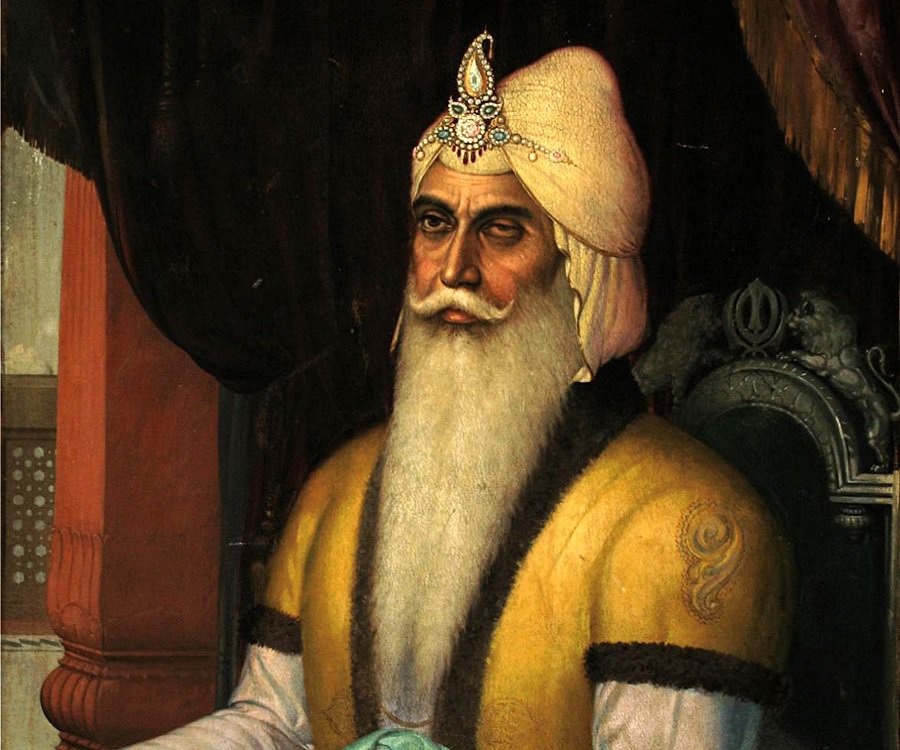Maharaja Ranjit Singh (13/11/1780 – 27/06/1839),was the leader of the Sikh Empire, which ruled the northwest Indian subcontinent in the early half of the 19th century. He survived smallpox in infancy but lost sight in his left eye. He fought his first battle alongside his father at age 10. After his father died, he fought several wars to expel the Afghans in his teenage years, and was proclaimed as the “Maharaja of Punjab” at age 21.His empire grew in the Punjab region under his leadership through 1839.
Prior to his rise, the Punjab region had numerous warring misls (confederacies), twelve of which were under Sikh rulers and one Muslim.Ranjit Singh successfully absorbed and united the Sikh misls and took over other local kingdoms to create the Sikh Empire. He repeatedly defeated invasions by Muslim armies, particularly those arriving from Afghanistan, and established friendly relations with the British.
Ranjit Singh’s reign introduced reforms, modernisation, investment into infrastructure, and general prosperity.His Khalsa army and government included Sikhs, Hindus, Muslims and Europeans. His legacy includes a period of Sikh cultural and artistic renaissance, including the rebuilding of the Harimandir Sahib in Amritsar as well as other major gurudwaras, including Takht Sri Patna Sahib, Bihar and Hazur Sahib Nanded, Maharashtra under his sponsorship. He was popularly known as Sher-i-Punjab, or “Lion of Punjab”.
Maharaja Ranjit Singh was succeeded by his son, Maharaja Kharak Singh.
Legacy
Maharaja Ranjit Singh is remembered for uniting Sikhs, and founding the Sikh Empire. He is also remembered for his conquests and building a well-trained, self-sufficient Khalsa army to protect a prosperous Sikh Empire. He amassed considerable wealth, including gaining the possession of the Koh-i-Noor diamond from Shuja Shah Durrani of Afghanistan. Ranjit Singh willed the Koh-i-Noor to Jagannath Temple in Puri, Odisha in 1839.
His most lasting legacy was the restoration and expansion of the Harmandir Sahib, most revered Gurudwara of the Sikhs, with marble and gold, from which the popular name of the “Golden Temple” is derived.
Maharaja Ranjit Singh Museum
A garden was laid out in 1818 in the north of the Amritsar city at the behalf of Shalimar Bagh of Lahore, known as Ram Bagh at the name of Guru Ram Dass. Maharaja devoted his time in this palace in summer days during the visit of Amritsar. It has been converted into the shape of Museum during the 400th years celebrations of Amritsar City. The Museum displays objects connecting to Maharaja Ranjit Singh such as arms and armour, outstanding paintings and centuries old coins, manuscripts, and jewelry.
(Ref : https://en.wikipedia.org/wiki/Ranjit_Singh & www.thefamouspeople.com)
